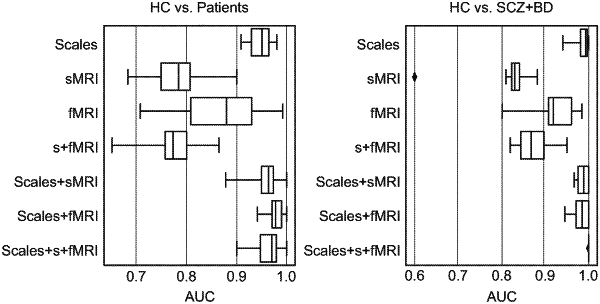| CPC G16H 50/30 (2018.01) [A61B 5/0042 (2013.01); A61B 5/055 (2013.01); A61B 5/16 (2013.01); A61B 5/7267 (2013.01); G06F 18/2148 (2023.01); G06F 18/2178 (2023.01); G06F 18/2193 (2023.01); G06N 20/00 (2019.01); G16H 10/20 (2018.01); G16H 30/20 (2018.01); G16H 30/40 (2018.01); G16H 50/20 (2018.01); G16H 50/70 (2018.01); A61B 2576/026 (2013.01); G06V 2201/031 (2022.01); G16H 20/70 (2018.01)] | 20 Claims |

|
1. A system for evaluating a patient for mental health issues, the system comprising:
a user interface;
a memory containing machine readable medium comprising machine executable code having stored thereon instructions for performing a method; and
a control system coupled to the memory comprising one or more processors, the control system configured to execute the machine executable code to cause the control system to:
receive, from the user interface, a selection of answers from a patient, the selection of answers corresponding to each question in a series of questions from mental health questionnaires;
receive, unprocessed MM data associated with the patient; and
process, using a machine learning model, the selection of answers and the unprocessed MRI data to output a mental health indication of the patient,
wherein the machine learning model was generated by:
receiving training data corresponding to a plurality of individuals, the training data comprising:
MRI data; and
a selection of answers to the series of questions;
determining a plurality of features from the training data;
extracting importance measures for each of the plurality of features;
generating a plurality of subset machine learning models based on the extracted importance measures for the plurality of features; and
selecting at least one of the subset machine learning models as the machine learning model.
|